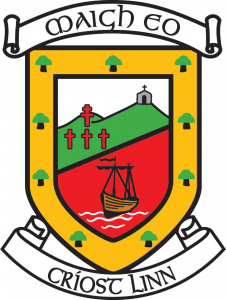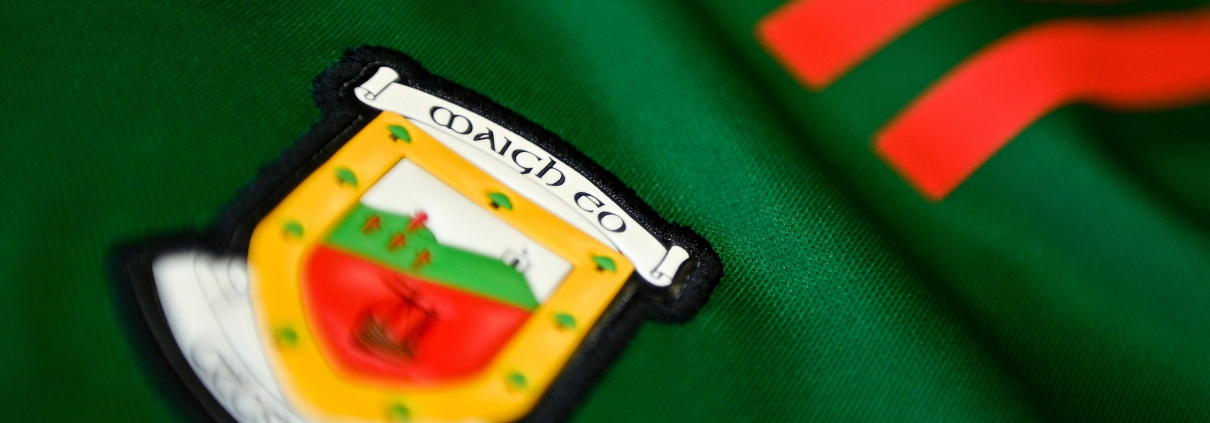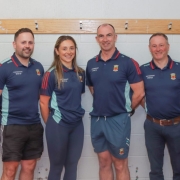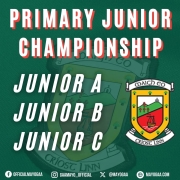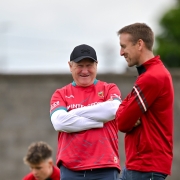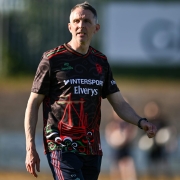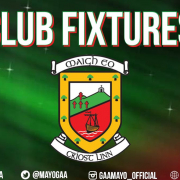Sports Impact Study & Press Release

Castlebar Sports Impact Study Final Report (.pdf)
Minister Thomas Byrne launches Sports Study in Castlebar.
Minister Thomas Byrne, Minister for Sport and Physical Education, to-day launched a publication titled “A Study of the Economic Social & Environmental Value of Sports in Castlebar”
The study was commissioned by Castlebar Chamber of Commerce, was funded by LEADER and incorporated the major sporting federations and their respective clubs in the town and its environs. These included Athletics, Basketball, Mayo GAA, Rugby, Soccer, Swimming and Tennis. The study was produced by Padraic McGuinness of PMG Consult and Lindsey Bell of Grant Thornton
Castlebar is the county town of Mayo and has an urban population of 13,054 based on the 2022 census. This study includes the town and its environs out to a 10km radius, resulting in a population of approx. 18,000 inhabitants within the study catchment area. 55% of the population in this area fall into the 0 – 44 age group, 30% in the 45 – 64 age group with 15% in the 65+ age group. The 13 Primary Schools, 3 Post Primary and one ATU Campus have a combined student population of almost 6,000, of which approx 20% are non-Irish.
When evaluating sports and recreation it is also important to understand other aspects of life in the town. Castlebar has high-quality employment, a health system providing an extensive range of medical services and interventions and a progressive social and recreational environment with several historical monuments and arts facilities within the area and the Wild Atlantic Way just a few kilometres away.
Key sports indicators for Castlebar indicate that almost 40% of the population have active membership in one or more of the 22 clubs within the partner sports federations in the study. A breakdown of the membership shows that 40% are GAA/LGFA Members, 31% Soccer, 8% each for Rugby and Tennis, 5% each for Basketball and Swimming and finally 3% for Athletics.
The Clubs spend €3M per annum and generate €7.5M in Sports Tourism. Over 60 people are directly employed in sports positions in the town. Separately, Castlebar is fortunate to have one of the largest national employers in the sports equipment and apparel sector in the town employing 300 people.
The contribution of volunteers in the sports provision system is a critical resource and input in the operational and viability model for community and non-professional sports. the survey results and extrapolated average values estimate there are some 650 active volunteers across all clubs and organisations in the study area at any given time. This equates to over 1,550 hours of voluntary time given per week in coaching, training, administration, management & governance and facilities maintenance.
The overall financial impact of sport to the economy is estimated at €30M per annum. This includes club membership, club running costs, employment costs, a value on volunteer hours and the value of hosting large event and games in the area. In 2019 alone there were 10 major events hosted in the town including Swimming, Tennis, Martial Arts, Cycling, Running, Walking, Handball, Tug-o-war. In 2019 also Mayo played Donegal in an All- Ireland Series. The attendance at Hastings MacHale Park was 27,000. The estimated contribution to the local economy is €1.5M for that one game!
From a facilities perspective the town and its environs have, for example 27 pitches, 8 Astroturf, 22 Sports Halls and Clubhouses, 9 Tennis Courts, 4 Basketball courts, and a number of outdoor exercise and recreation facilities. One of the most valuable amenities in the town is the Lough Lannagh complex which incorporates outdoor leisure trails, a tennis club with 4 indoor courts covered under a large airdrome, boxing club facilities and the only 25M / 8 lane swimming pool in Connaught. Hastings MacHale Park is the other major sports infrastructure which contributes to Castlebar being a town that can host large events and in particular contributes enormously to sports tourism.
As indicated earlier with 20% of our student population being non-Irish this means that clubs and sporting bodies have to adjust to a more diverse membership and facilitate the integration of people with different backgrounds. It is also possible that facilities will be required for different sports than those we have been accustomed to. The growth in female participation, especially in field sports must be managed successfully and quickly. Clubs will also need to adapt their offerings to accommodate participants and supporters of varying levels of ability and capacity. All of this is necessary as our society expands and more diversity and inclusion requirements emerge.
Following all of the research and analysis the study conclusions cover sports skills, supports and infrastructure which include:
-
Invest in development of skills and capabilities of all sports players so that we remain “sports competitive” at a national/international level;
-
Support clubs and sports bodies to adopt best practice and policy in Access for All, Diversity & Inclusion, Climate Action Sustainability Measures and Integration between sports facilities;
-
Continue to attract and run events, galas, tournaments, etc. which bring competitors and visitors to the town thereby adding to the economy of the region.
-
Proactively support gender balance in sports through participation, membership and progression by female players. And in particular, to support the process of integration already underway at national level across the GAA, LGFA and Camogie Association.
-
Ensure that any future major field sports facilities can have some portion which will accommodate all weather playing of games and indoor tournaments;
-
Address the underdevelopment in certain sports through facilities investment and promotion most specifically in athletics and basketball;
-
Consolidate and maintain existing facilities and assets to a modern- day standard;
-
Identify and procure publicly owned lands for future multi-sports facilities based on the successful Lough Lannagh clustering / zoning model;
-
Ensure other publicly owned facilities such as playing fields and sports halls within schools are available for use outside of school hours;
-
In the short-term address shortages and weaknesses in provision at the key sports facilities including St Mary’s track & field; MacHale Park / Castlebar Mitchels; and expansion at Castlebar Celtic.
The final and most challenging recommendation is that all of the other recommendations are predicated on the establishment of a Local Sports & Leisure Network to plan for future integrated sports strategy including multi-sports facilities; shared resources and sports promotion;
We believe many other similar sized towns throughout the country can extrapolate the data and draw similar conclusions which are relevant and specific for each town. For Castlebar and its environs the report confirms that the town is a premier destination for sports and leisure facilities. Maintaining such a status into the future will require investment for additional facilities and upgrades and collaboration between different groups, in order to facilitate demographic changes, ever increasing standards and higher levels of female participation, particularly in field sports. Sustainability and weather proofing factors must also be taken into consideration. The sourcing and funding for all investments needs careful consideration as much will depend on Government intervention which is increasingly channelled through broad community-based groups and entities. The challenge for all sporting bodies in Castlebar is to consider how they can come together, in a community format, to leverage the existing infrastructure base and maximise the investment opportunities available from Government, while at the same time retaining their respective identities and ethos.
The study was launched by Minister for Sport and Physical Education, Thomas Byrne, TD at the ATU Campus in Castlebar, in front of a large gathering of Sports Personnel, Elected Representatives, Educationalists, Executives from Mayo County Council and Chamber of Commerce Members.
Minister Byrne commented “I strongly welcome the publication of this excellent study which includes detailed analysis of all major clubs in Castlebar and its environs. This analysis will be of great assistance to both my Department and Sport Ireland in its work.” Minister Byrne went on to recognise that many of the recommendations in the study are directly in line with Government policy.
On the issue of equality in sport, Minister Byrne continued “I have made it clear that future Government funding through the Sports Capital and Equipment Programme will only be made available to applicants which guarantee similar access to facilities to its male and female members.” The Minister applauded the work done through the study and the level of engagement by a broad range of stakeholders in the town and its environs.
The Sports Study report is available on-line at
Castlebar Sports Impact Report – Castlebar Chamber of Commerce
Two related publications about Castlebar and its Environs are also available as follows;
- CASTLEBAR “A place to call Home”
Castlebar A Place to Call Home – Castlebar Chamber of Commerce - POPULATION TRENDS Castlebar and its Environs
Castlebar Population Trends – Castlebar Chamber of Commerce
For further information contact Castlebar Chamber by mail at hello@castlebarchamber.com

Martin McLoughlin, Alan Dillon, Lisa Chambers, Minister Thomas Byrne, Maria Staunton, John Caulfield, Anne Conlon
|
 L-R: Ronan Kirrane, Liam Moffat, Valerie Murphy, Minister Thomas Byrne, Seamus Tuohy L-R: Ronan Kirrane, Liam Moffat, Valerie Murphy, Minister Thomas Byrne, Seamus Tuohy |
